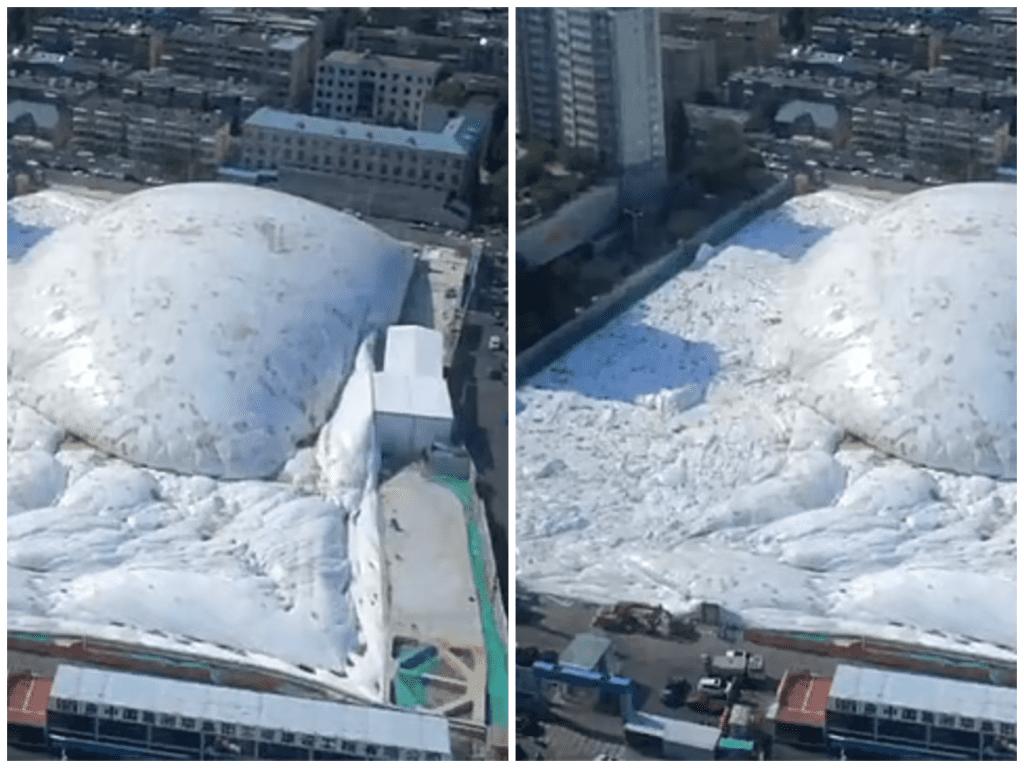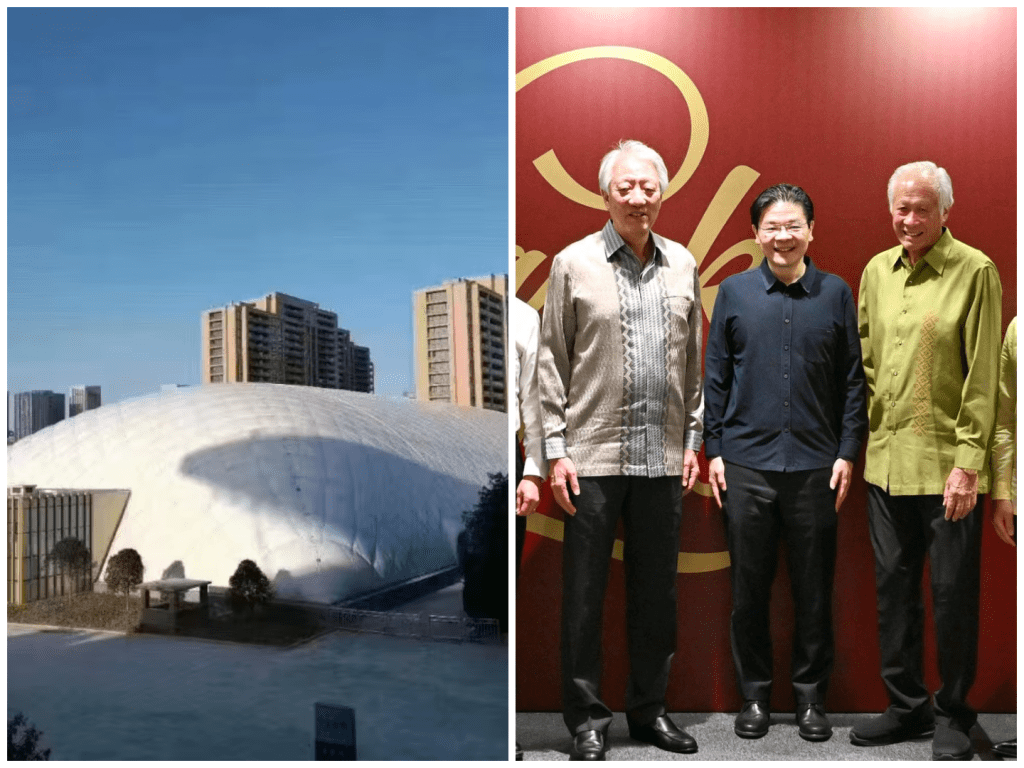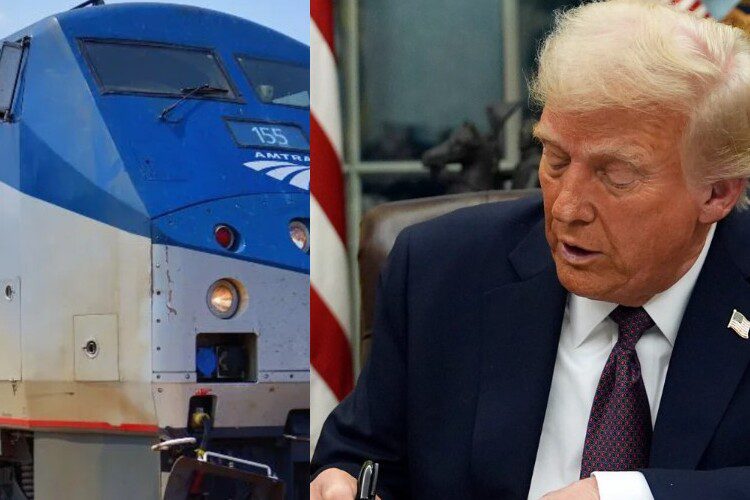Inside China’s Giant Inflatable Dome That Silenced a Whole Construction Site — and What It Means for the Future of Cities

When you think of construction, your mind probably goes to chaos. Loud jackhammers, trucks backing up with that constant beep, clouds of dust floating into nearby homes and shops — it’s one of those necessary evils of city life. No matter where you live, construction brings with it an unavoidable disruption. But in Jinan, a major city in eastern China’s Shandong Province, something totally unexpected is happening. Imagine walking past a massive construction site in your neighborhood and instead of hearing all that noise or getting your face blasted with cement dust, you look up and see a gigantic white dome covering the entire area — like a massive bubble dropped from the sky. And inside that bubble? Silence. Clean air. Machines running quietly, tucked away like they’re on mute.
That’s exactly what happened recently when China unveiled one of its most ambitious and visually bizarre urban experiments yet — a 50-meter-tall inflatable dome built entirely to enclose a noisy, dusty construction site. Fifty meters, by the way, is about 165 feet. That’s taller than a 15-story building. But it’s not just the height that’s impressive. The dome stretches across 20,000 square meters, which is about the size of three football fields. And it was inflated right over an active work zone — not as a temporary showpiece, but as a real solution to the kind of urban pollution that people living near construction sites have been complaining about for decades.

The structure itself is what’s called an air-supported dome. That means it doesn’t rely on beams, steel frames, or pillars. It stays up simply through constant air pressure — kind of like a bouncy castle, but on a scale that feels almost futuristic. These types of structures have been used before in China and other countries for sports arenas or storage spaces, but never like this — and never this massive. The goal is simple: block out dust, reduce noise, and create a more livable experience for the people around it. But in a way, it’s also something deeper than that. It’s a symbol of how modern cities might start to rethink the way they grow — not by ignoring the mess they create, but by containing it.
The idea first went viral when videos and photos started popping up online showing what looked like a giant balloon taking over a city block in Jinan. Many people thought it was fake at first — a CGI rendering or a concept project. But it wasn’t. It was real. And it was already working. According to reports from Chinese media and international outlets like Gulf News and The Independent, the dome is equipped with ventilation systems to prevent the build-up of heat or toxic fumes inside. That’s important because, naturally, a sealed bubble full of construction machinery could easily become dangerous if not ventilated properly. But officials assured that the internal air quality is carefully monitored, and the system includes fans and air filters to keep everything under control.
Of course, not everyone was convinced right away. Some reactions online ranged from amazed to skeptical. A Reddit post featuring the dome drew tens of thousands of upvotes, with one commenter joking, “Unless it’s heavily ventilated, it’s going to be a freaking oven in there.” Others wondered what would happen if a storm hit, or if someone accidentally punctured the dome. But those concerns weren’t totally ignored by the engineers behind it. The structure is designed to be stable and durable under normal weather conditions, and it can be deflated and taken down if needed. Plus, because it’s modular, it can be moved and reused at future sites, making it not just protective but sustainable.
What’s even more fascinating is what this dome says about China’s approach to innovation — especially in areas where public comfort intersects with urban development. In many cities around the world, people living near new construction zones just have to deal with the impact. Whether it’s 6 a.m. drilling, dust all over their laundry, or even cracks in their walls from heavy-duty machinery, the disruption is just part of life. Complaints go unanswered. Developers shrug. Governments often say they can’t do much. But this project in Jinan seems to be a quiet, inflatable rebellion against that mindset. It asks: What if we didn’t just accept that construction had to be a burden? What if we could build cities that don’t make people miserable while they grow?
That kind of thinking is rare — especially when it costs more upfront. Covering a construction site with a dome isn’t cheap. It requires planning, equipment, power to keep it inflated, and constant monitoring. But the long-term benefits might outweigh those costs. Less dust means fewer respiratory issues for residents. Less noise means fewer complaints and disruptions. And for construction companies, it could mean faster approvals, smoother operations, and even improved worker morale. After all, working in a controlled environment is a lot safer and more comfortable than working in the open air surrounded by angry neighbors and city noise.
This isn’t the first time China has experimented with inflatable domes in construction, but it is by far the most visible and ambitious example. And it may become a trend. Officials in Jinan have hinted that this could become standard practice for large urban projects moving forward — especially in dense neighborhoods where the impact of noise and dust can be felt block to block. If it works, it might spread to other cities in China, and maybe even to other parts of the world where urban construction is booming but local residents are growing tired of living in permanent chaos.
It’s worth noting that this project also reflects a broader shift in China’s environmental policies. The country has faced major challenges with pollution over the past few decades, especially in its rapidly growing cities. But in recent years, we’ve seen serious efforts to crack down on smog, improve air quality, and reduce industrial pollution. This dome is just one piece of that puzzle — a literal barrier between construction and community. And whether you see it as a brilliant invention or just a giant balloon, you can’t deny it’s bold.
In the end, maybe this is what progress looks like in the 21st century — not always loud, not always messy, but thoughtful. Quiet. Covered. It’s easy to laugh at something like this or to assume it’s overkill. But when you think about how cities have been built for generations — often at the cost of the people living next to the cranes and bulldozers — maybe this giant dome is exactly what we need. A soft shell around a hard process. A reminder that even in growth, we can choose to protect, to care, and to be better neighbors.



